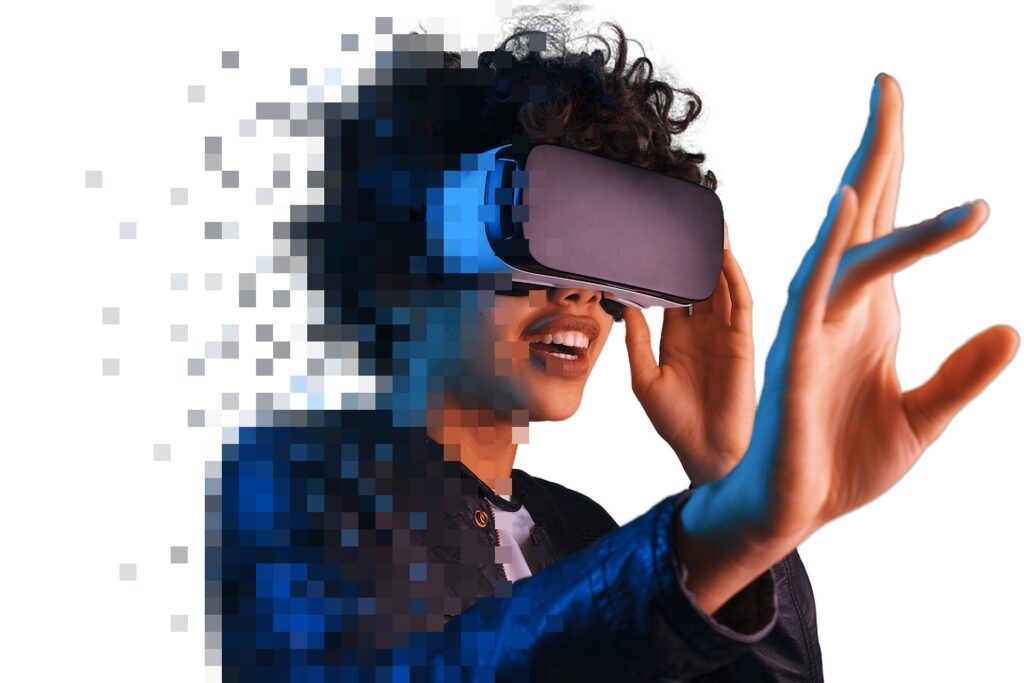Step into the future as augmented reality (AR) reshapes the way we experience entertainment and education, blurring the lines between the digital and physical worlds.
In an era where technology continues to evolve at an unprecedented pace, augmented reality (AR) stands out as a groundbreaking innovation that blurs the line between the physical and digital realms. By overlaying virtual elements onto the real world, AR has captured the attention of both the entertainment and education industries, redefining the way we experience and learn. In this article, we will explore the latest trends in augmented reality and delve into how they are shaping the future of entertainment and education.
From immersive gaming experiences and interactive storytelling to dynamic educational tools and experiential learning, AR is revolutionizing our realities in ways never before imagined. Join us as we embark on a journey through the captivating world of AR, where possibilities are limited only by the bounds of our imagination.
AR in Entertainment
One of the most prominent arenas where augmented reality (AR) has made its mark is the realm of entertainment. In gaming, AR has revolutionized the way we interact with virtual worlds, captivating millions with its immersive experiences. Take, for instance, the global phenomenon Pokémon GO, where players use their smartphones to hunt and capture virtual creatures in the real world. This groundbreaking game showcased the potential of AR in engaging players in an entirely new way.
But AR’s impact extends far beyond gaming. Live events such as concerts and sports have embraced AR to enhance the spectator experience. Imagine attending a concert where holographic performers share the stage with real artists, creating a breathtaking fusion of the physical and digital worlds. Similarly, AR in sports can overlay real-time data and statistics onto the field, offering fans a deeper understanding of the game as they watch it unfold.
Furthermore, AR holds tremendous potential for immersive storytelling and filmmaking. By blending virtual elements seamlessly with the physical environment, filmmakers can transport audiences into captivating narratives like never before. Imagine watching a movie where characters and objects interact with your surroundings, blurring the boundaries between fiction and reality.
In the world of entertainment, AR is opening up limitless possibilities for engagement, interactivity, and immersion. From gaming to live events and storytelling, this technology is shaping the future of entertainment and propelling us into a new era of captivating experiences.
AR in Education
Beyond its impact on entertainment, augmented reality (AR) is reshaping the landscape of education, offering new ways to engage students and enhance learning experiences. By merging the real and virtual worlds, AR has the power to transform classrooms into immersive and interactive learning environments.
In traditional classrooms, AR can revolutionize the way lessons are delivered and comprehended. Through AR-enabled devices, students can visualize complex concepts and interact with virtual objects, bringing abstract ideas to life. Imagine biology lessons where students explore a three-dimensional model of the human body, or history lessons where they witness historical events unfold before their eyes. By incorporating AR into lessons, educators can foster deeper understanding and active engagement among students.
Furthermore, AR holds immense potential for remote learning, allowing students to transcend physical boundaries. Through AR applications and platforms, learners can embark on virtual field trips, exploring historical sites, natural wonders, and cultural landmarks from the comfort of their own homes. This technology offers equal opportunities for students to explore the world and gain firsthand experiences that might otherwise be inaccessible.
As AR continues to advance, its integration into education offers a transformative approach to teaching and learning. By fostering interactivity, visualization, and accessibility, AR is revolutionizing the way knowledge is imparted, opening up exciting new possibilities for educators and learners alike.
Technological Advancements Driving AR Trends
The widespread adoption of augmented reality (AR) owes much to the advancements in technology that have made it more accessible and immersive than ever before. Among these advancements, smartphones and mobile devices have played a pivotal role in bringing AR experiences to the masses. With their powerful processors, high-resolution displays, and built-in cameras, smartphones have become the primary AR platforms for millions of users, enabling them to seamlessly integrate virtual elements into their real-world surroundings.
Furthermore, the development of AR headsets and wearables has pushed the boundaries of immersion and interactivity. From standalone headsets to smart glasses, these devices offer hands-free AR experiences, creating a more seamless blend of virtual and real-world elements. As these technologies continue to evolve, we can expect more lightweight, comfortable, and visually stunning AR wearables to enter the market.
Moreover, the advent of 5G connectivity and cloud computing has significantly impacted AR experiences. 5G’s ultra-low latency and high bandwidth capabilities enable real-time data transfer, allowing for more responsive and interactive AR applications. Additionally, cloud computing enables complex AR processing to be offloaded to remote servers, reducing the computational burden on devices and opening up the potential for more resource-intensive AR experiences.
As smartphones, AR headsets, and wearables advance, and as 5G and cloud computing continue to evolve, the future of AR looks promising. These technological advancements are driving the growth and innovation of AR, enhancing the quality and accessibility of AR experiences and paving the way for new and exciting applications in various industries.
Conclusion
In conclusion, augmented reality (AR) has emerged as a transformative technology with immense potential in both entertainment and education. From revolutionizing gaming experiences and live events to enhancing classroom learning and enabling virtual field trips, AR is reshaping the way we engage with the world around us. As we continue to witness technological advancements and the growing adoption of AR, it is crucial for us to embrace this evolving landscape and explore the exciting possibilities it offers. By embracing AR, we can unlock a new realm of interactive, immersive, and educational experiences, propelling us into a future where the boundaries between the real and virtual are beautifully blurred. So, let us embark on this journey together and embrace the remarkable world of augmented reality.

